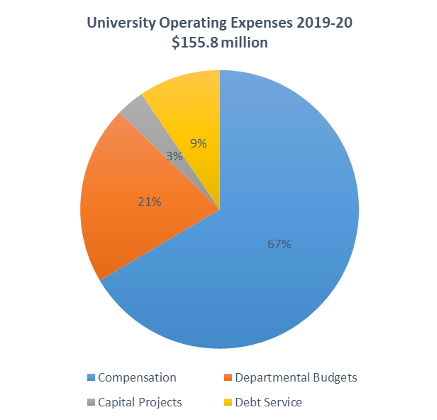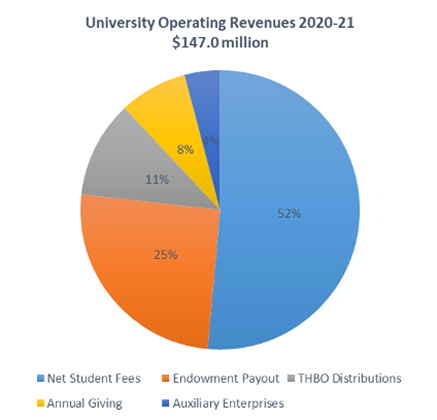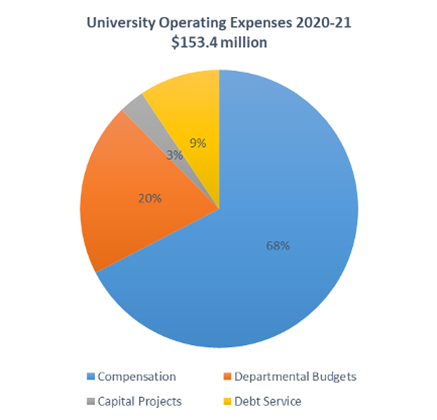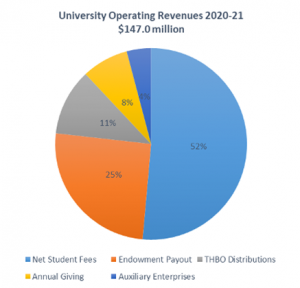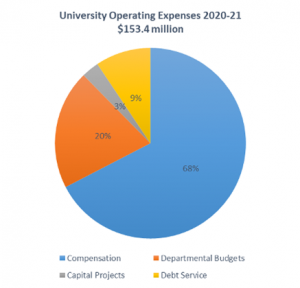University wrestles with financial impact of remote learning
Washington and Lee has a committee dedicated to the development of a contingency plan in the case of remote learning extending through fall 2020
May 4, 2020
Washington and Lee University is eligible to receive $1,045,044 in stimulus money from the U.S. Department of Education. At least $522,522 will be set aside as emergency financial aid for students, if the university chooses to accept the money.
The funding from the CARES act, a federal stimulus package enacted on March 25, is part of a more than $2 trillion package for higher education institutions that need help recovering from the financial fallout of remote learning in response to the coronavirus.
University Treasurer Steve McAllister said in an email to the Ring-tum Phi that the university is working to develop a process to appropriately allocate the emergency student funds before filing the paperwork to receive the money.
“We have a working group that has developed two approaches that we are evaluating at the senior leadership level, and at the same time, we are working to make certain that we know all of the conditions and obligations associated with accepting these funds,” McAllister said. “I believe we will be making decisions on these funds within the next two to three weeks.”
Washington and Lee distributed its financial plan for the upcoming 2020-21 academic year, approved by the Board of Trustees’ Finance Committee. The budget is based on the assumption that students will return to campus for in-person learning in the fall 2020.
“University leadership is keenly aware that this may not prove possible and has begun to consider other scenarios,” McAllister said in an April 24 email to university employees. “If the duration of the public health crisis necessitates a different scenario, we will certainly face additional financial implications, and the budget will have to adjust. In such a circumstance, we will engage with the community to share the impact and ways that we will manage through it.”
Washington and Lee has a committee dedicated to the development of a contingency plan in the case of remote learning extending through fall 2020.
“We are developing a plan for communications to the University faculty, staff and community depending on how circumstances unfold,” McAllister said in an email to the Ring-tum Phi.
The university plans to enroll 467 incoming first-year students and 120 incoming 1L students, cut down on the number of students studying abroad, a 4.3 percent increase to net student fees, and an increase the financial aid budget by $500,000 “to address financial hardship concerns that emerge from the COVID-19 crisis,” McAllister said in the April 24 email to employees.
“These criteria are very similar to those that we anticipated and experienced following the 2008-09 financial crisis,” McAllister said in the email.
The university expects to lose $6.5 million in expected revenue for the remainder of the 2019-20 academic year, and if students return to campus in the fall, a loss of $12.5 million in expected revenue for 2020-21, based on February calculations.
Because of the expected loss of revenue, Washington and Lee will make the following changes for employees:
- salary freeze;
- reduction in the university’s match on retirement contributions from 5 percent to 2.5 percent, while the automatic 5 percent contribution for eligible employees will remain unchanged;
- six faculty, 12 administrative and 11 staff positions will remain vacant without replacement over the next two years;
- and reduction in departmental budgets and annual capital budget.
“While the actual severity of the downturn will need to factor into future budgets, under our current planning model, we are hopeful to restore the retirement contribution level to 10 percent and to provide salary increases no later than the 2022-23 year,” McAllister said in the April 24 email.
No employees, including administrators, will receive salary cuts at this time, McAllister said in an email to the Ring-tum Phi. The university does not plan to lay off or furlough any employees if students return to campus in the fall.
McAllister said that the university is unsure exactly which positions won’t be replaced.
“As those departures occur, then we will review carefully the position that is vacated, examine ways that the function could be filled differently and assess the importance of the continuation of the functions relative to the priorities of the University and budget constraints,” McAllister said in an email to the Ring-tum Phi. “From this process, some positions will be refilled while others will be eliminated, but it is simply too early to know what the 29 positions will be.”
To help offset costs, the Trustee Reserve Fund will support university operations with $16 million through 2022.
Loss in revenue for the university in response to the coronavirus spread across the United States include the refunds for students on room and board plans, which totaled nearly $5.5 million, a decline in markets in which the endowment is invested, reduced philanthropy that supports the Annual Fund, and impact on enterprises like the university store and catering services.





